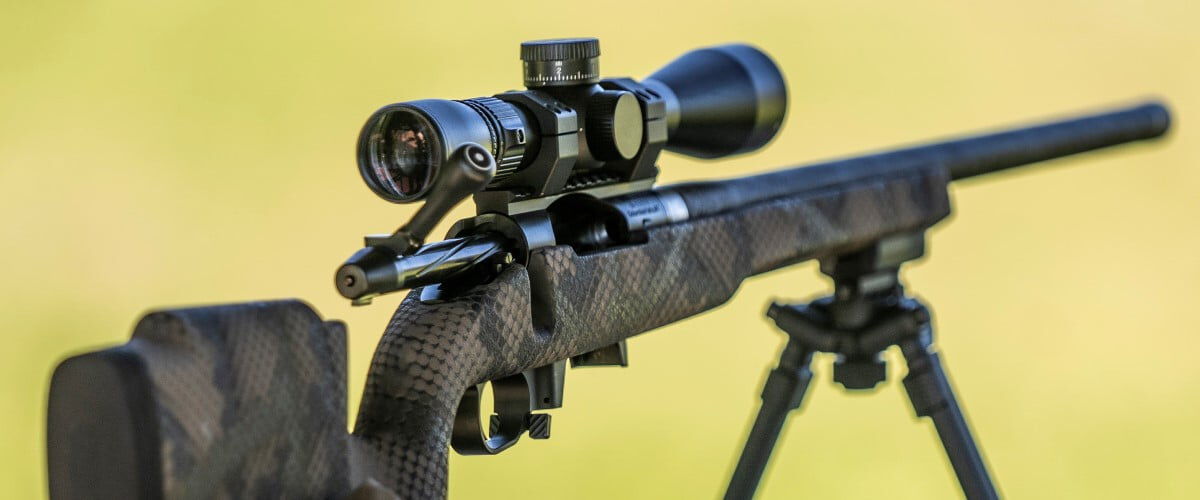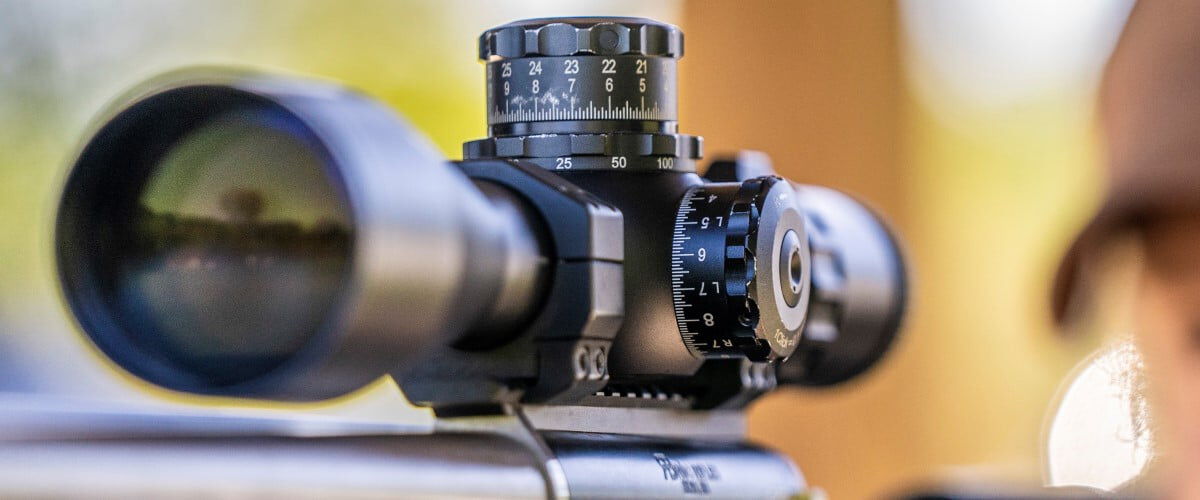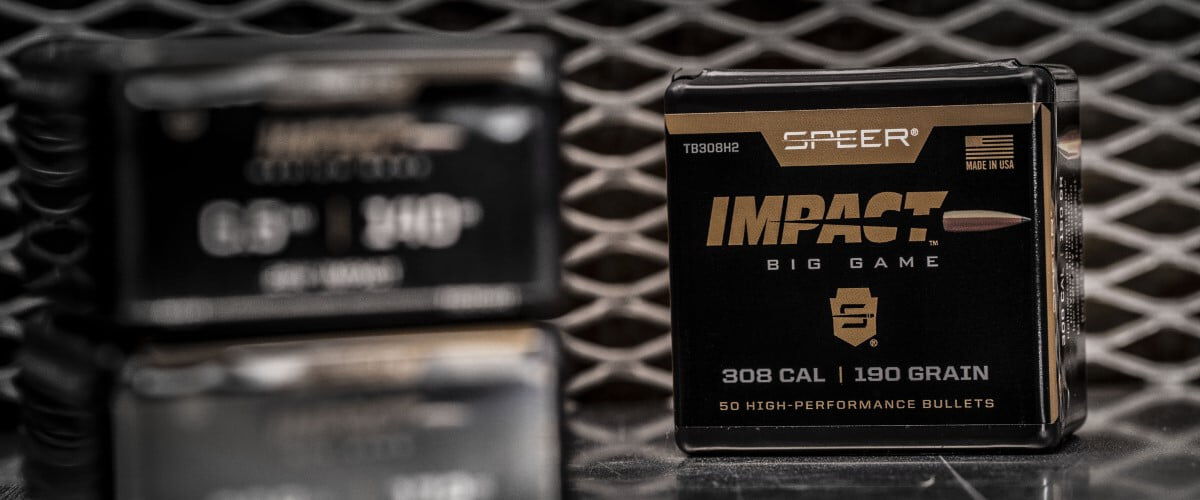
The concept of long-range hunting has become popular—and polarizing—in recent years. With more knowledge, specialized tools, and better firearms and ammunition at their fingertips, more hunters have been looking to push their effective range to distances they might have never dreamed of decades ago. And that’s where a bit of controversy comes in. Critics are quick to call foul, but distances are just numbers, and the elements that go into making an extreme-range shot are the same that go into hitting the target inside of 100 yards. At any range, the onus is on the hunter to make certain they have the skills, experience and equipment to make the shot. They also need to have a defined maximum range and the self-discipline to stick to it.
So, let’s not look at long-range hunting as a pursuit unto itself, and instead focus on preparing ourselves to extend our own effective range—whatever it might be. Here’s how to get started.
Choosing Your Rifle
The first step is to look at hunting equipment as a system and ensure all components work together. I’m often asked which rifle I recommend, and instead of mentioning a brand or model I first ask what type of hunting the individual intends to do. If they aren’t walking long distances or hiking in steep country and are physically strong enough to handle a rifle in the 7- to 9-pound range, there are many options, and heavier target-style rifles offer distinct advantages. For one, they typically have heavier barrel profiles, and heavier barrels heat more slowly, allowing more accurate shots between cooling periods at the range. Heavier target-style guns also typically have features like adjustable combs and stocks with lots of mounting options in the form of MLOK or QD attachment points. Lastly, heavier rifles manage recoil better, allowing you to practice more comfortably and judge hits more accurately because recoil isn’t obscuring target picture as dramatically.

In some instances, hunters plan on pursuing game in high, thin-air altitudes where a pound of gun weight translates to a substantial burden. This can mean a hunter who is stalking elk in steep canyon country or chasing goats and sheep above tree line. In some instances, particularly in wilderness fly-in hunts, your gear might be limited to 50 pounds or so, and that includes gun weight, so a 7-pound rifle allows 3 extra pounds of gear when compared to a 10-pound target gun. There are many dedicated mountain rifles that are both light and accurate, several of which make use of light materials like aluminum, titanium and carbon fiber. Recoil will be sharper, but that’s a fair tradeoff if the added gun weight is going to limit performance.
No matter which rifle you choose, accuracy, reliability and comfort matter. The good news is that most modern hunting rifles are reliable and have the potential to be accurate. But personal taste matters. There are some guns that, while they shoot small groups and are built with premium materials, just don’t fit me well or I’m not a fan of the control layout or other features. You can learn to shoot most guns effectively, but a gun that is comfortable for you becomes an extension of the body, allowing you to get on target quickly.
Optics Are Key
Most modern optics are suitable for basic hunting, but extending your range requires a special type of scope. First, it must track accurately. I perform tracking tests on scopes. Some perform well, some do not. When you’re shooting at extended ranges (beyond, say, 400 yards) you’ll probably stop using holdover or maximum-point-blank-range estimates and will instead start dialing for elevation. Your range card may tell you that you need to dial 6.5 MOA of elevation to hit the target, but that only works if your scope is tracking properly. Before you begin hunting, you must ensure your scope is adjusting properly for holdover.
There are more reticle options than ever before, and some of these reticles can be truly helpful for extended-range shooting. You’ll have to find a reticle you like, and there’s no best option for everyone. For long-range target shooting, I don’t mind having a “busy” reticle with lots of elevation and wind hold points. For hunting, I prefer a reticle that is cleaner, simpler and offers an immediate reference point for holdover and windage without a lot of distracting clutter. Bear in mind that first focal plane scopes (FFP) offer accurate elevation and wind holds regardless of magnification level. The more familiar second focal plane scopes (SFP) offer accurate holdover and windage points at one magnification, which is usually the highest. Don’t know if your scope if FFP or SFP? Look through the optic and dial for magnification. If the reticle size changes it’s FFP, if it stays the same size it’s SFP.

Magnification is also important, but the truth is you can shoot accurately with a 12x or 15x scope out to any reasonable hunting distance. Also look for a scope with quality multi-coated lenses and good low-light performance. Make certain that the scope offers ample eye relief: Getting smacked in the forehead with an optic is no fun.
Cartridge & Bullet Selection
No matter how good your rifle and optic are, it is ultimately the bullet alone that hits game and determines whether the animal is quickly dispatched. There is a lot of debate and volumes of literature about cartridge choice, and I will only add that you need to select a cartridge that is appropriate for the game you are hunting. Regardless of the conditions or the animal, there are lots of good choices in our current cartridge lineup.
I’m of the belief—and I’m not alone in this—that bullet selection has as much or more bearing on terminal performance than cartridge choice. Shoot an elk with a 270 Win., 6.5 PRC or 300 Win. Magnum in the right place at a distance at which the bullet carries sufficient energy, and the animal will expire. Shoot an elk with any of those cartridges with a poorly performing bullet and the results can be disastrous.
This is why I spend a lot of time choosing bullets and testing their performance on game. For shooting at extended distances, a bullet with a high ballistic coefficient (BC) will drift less in crosswinds and retain more energy, which are decided advantages. This bullet must expand properly at lower velocities at greater distances, which not all do. Conversely, the bullet must also be tough enough not to break up on close range shots and fail to penetrate.
Few bullets meet all the criteria for what I consider an effective all-around hunting projectile when long shots are possible but close-range shots cannot be ruled out. One that does is Speer’s Impact. The .264-inch bullet weighs 140 grains and has a BC of .526, while the 190-grain .308 has a BC of .596. Anything over .500 is good, and bullets approaching .600 are perfectly suited for serious long-range shooting across windy canyons.
Impact bullets achieve these high BCs because they are heavy-for-caliber and offer a low drag profile thanks in part to the Slipstream polymer tip. The tip pushes rearward into the open nose cavity of the bullet on impact, which initiates expansion at low velocities (200 fps lower than competing bullets) and promises lethal performance at great distances. But these bullets also have a molecularly bonded core that prevents bullet break-up at close range and high velocities. With a 190-grain .308 Impact bullet in my 300 Win. Magnum I’m ready to take a cross-canyon shot at a deer or elk and know that the bullet’s aerodynamic design will retain sufficient velocity to initiate expansion. However, if a big bull elk steps out of the timber under 100 yards, that same bullet promises deep penetration.

Improve Your Skill Set
The best rifle, optic and bullet in the world are only as effective as the shooter behind the rifle, and the key to ethical hunting at extended distances is not hitting the target but rather hitting the target in the right place. That requires practicing at the distances you plan to shoot.
If you’re serious about extended your maximum range, make the investment. Taking a hunting course at Gunsite Academy in Arizona, FTW in Texas, or any other quality facility with an excellent reputation for improving shooter performance is money well spent. It’ll give you the confidence in your gear and your own skill level so you know you will hit the animal in the vitals with your first shot—as well as the wisdom to pass up a shot when you can’t guarantee that.